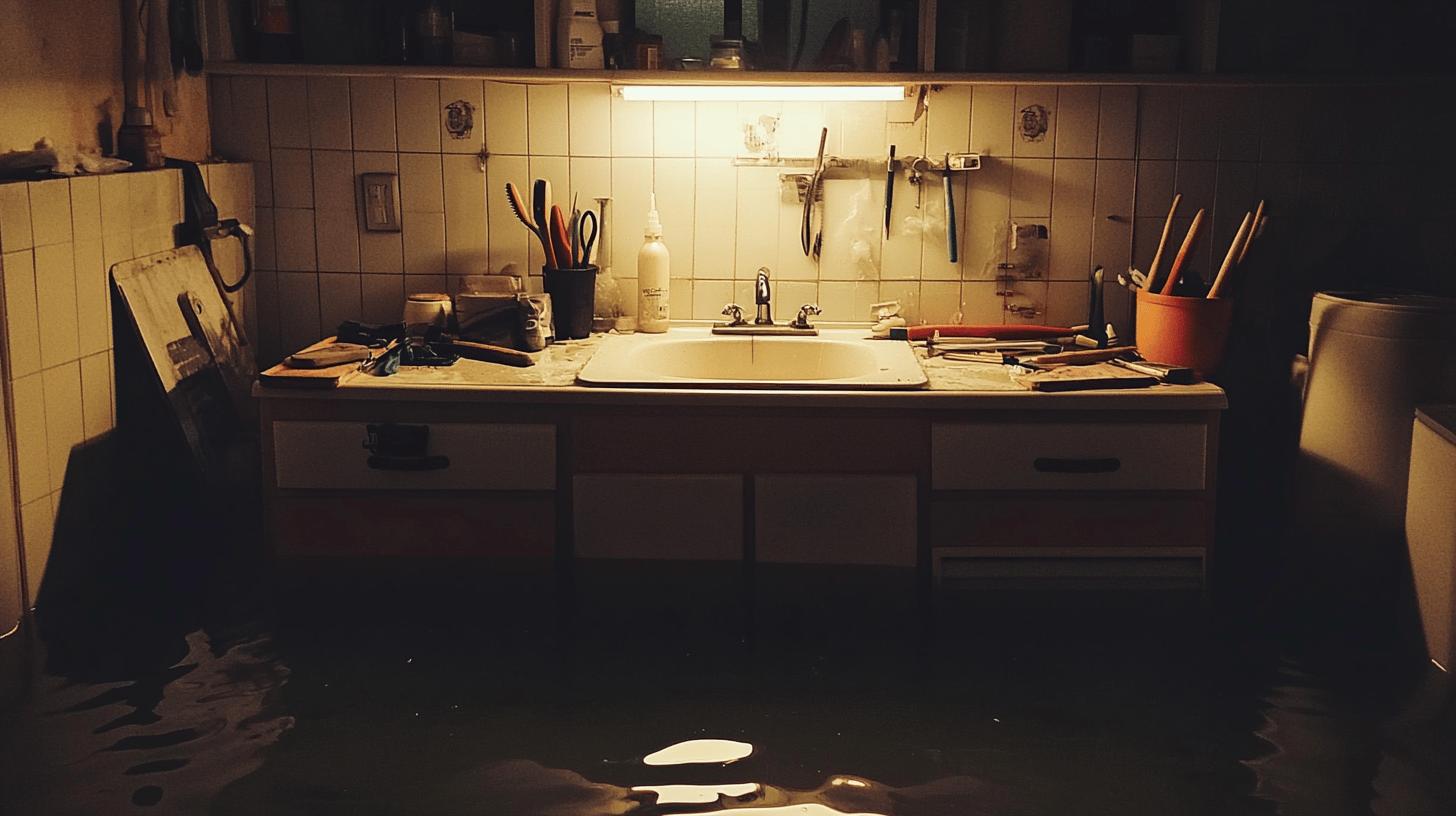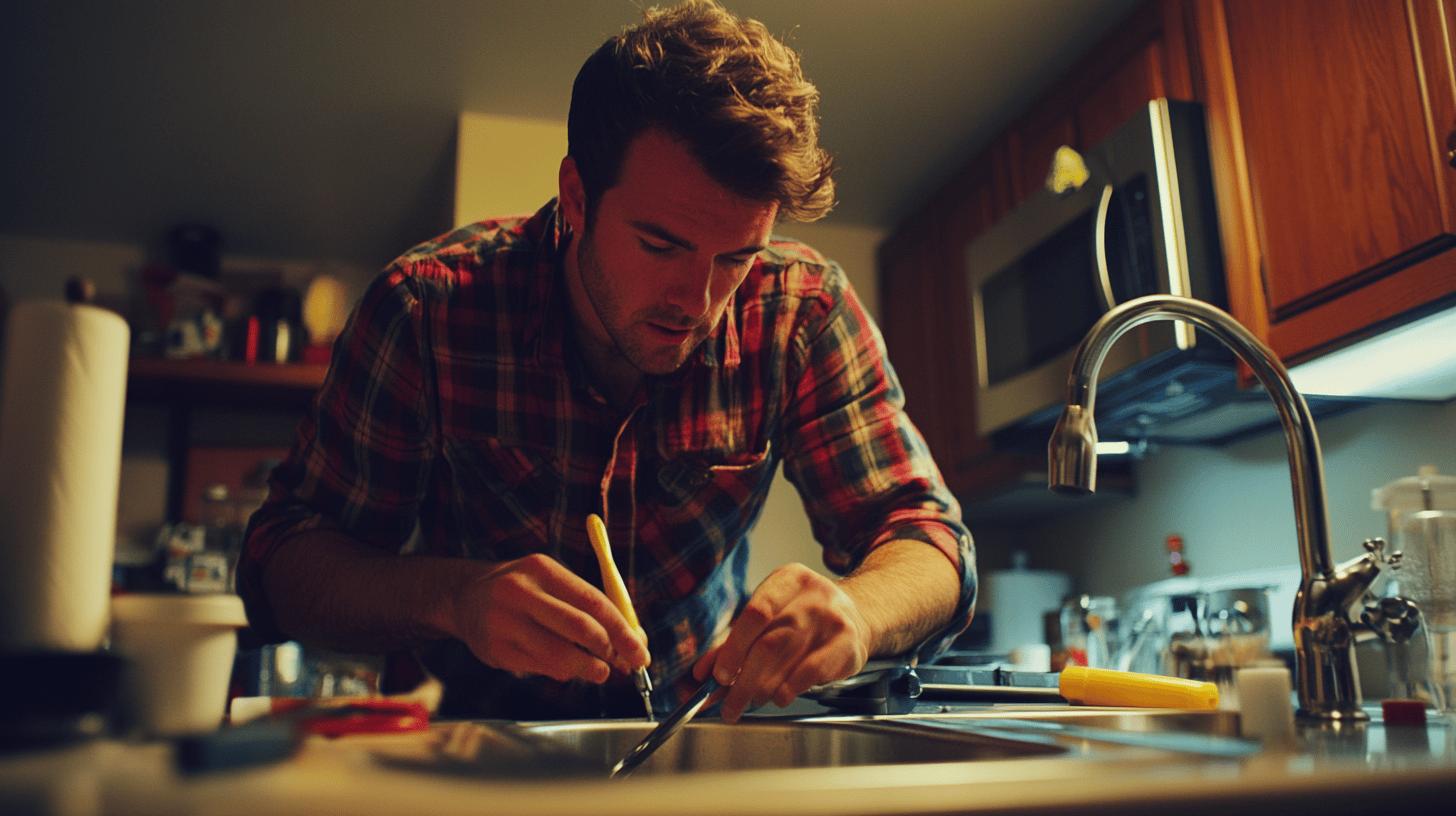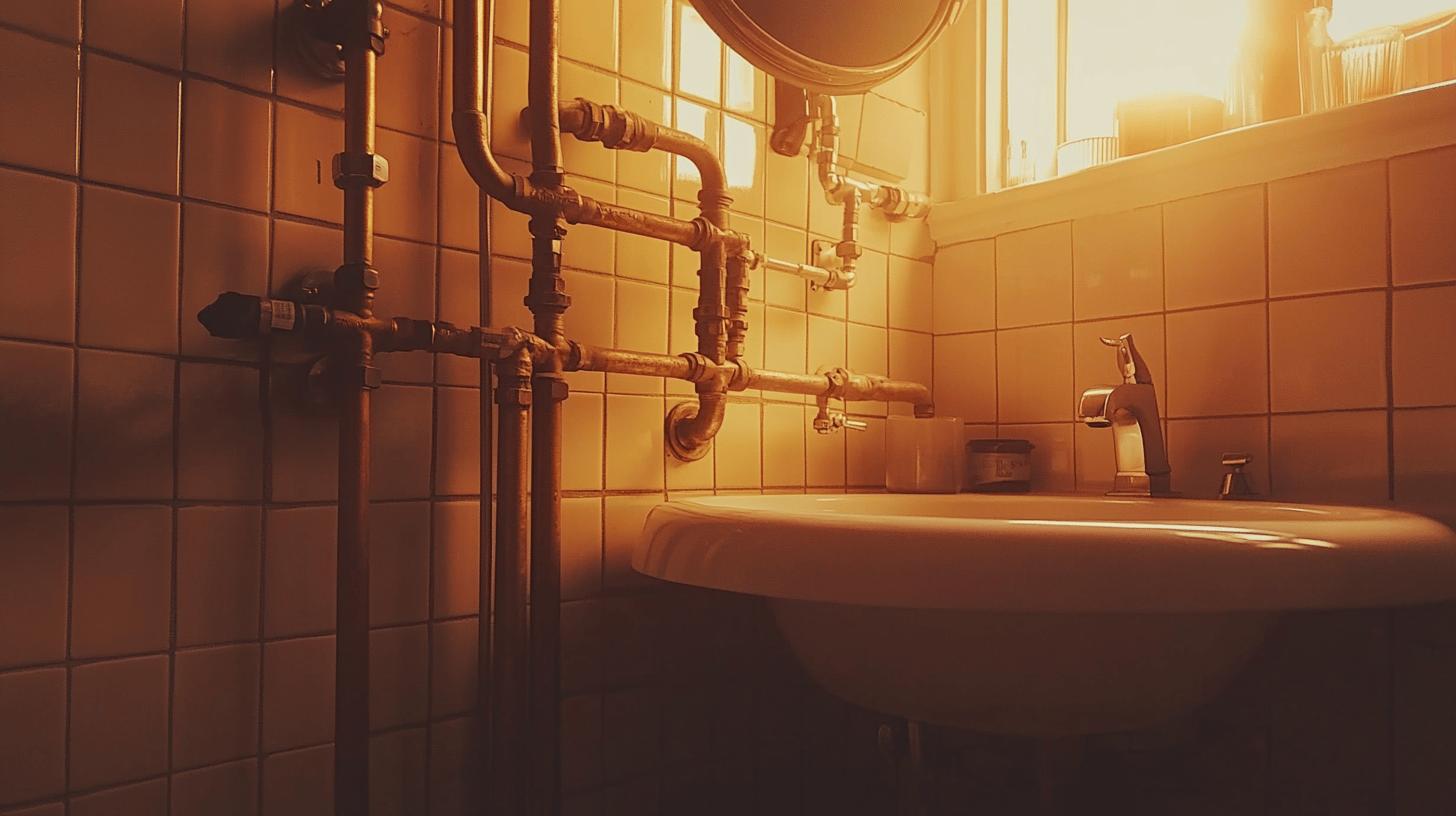TL;DR:
- Vents regulate air pressure, remove gases, and prevent sewer gas buildup.
- Drains transport wastewater from fixtures to sewer/septic systems using gravity.
- Vent installation: Vertical placement, extend through the roof, follow building codes.
- Drain installation: Maintain a slope of 1/4 inch per foot, precise horizontal angles.
- Maintenance signs: Persistent odors, slow drainage, unusual noises, frequent clogs.
- Troubleshooting: Clear blocked vents on the roof; use plumbing snake for drain clogs.
- Choosing systems: Ensure material compatibility, check local codes, consult professionals for installation and maintenance.
Is your plumbing system quietly messing with your home’s efficiency? A lot of people don’t realize how important vents and drains are to keeping everything running smoothly. Vents manage air pressure, help with drainage, and get rid of sewer gases, while drains carry away waste water. Knowing the differences between these two is key to having a healthy plumbing system. Learn how vents and drains work together to keep things flowing and avoid expensive repairs later on.
Understanding the Functional Differences between Vents and Drains
Vents, or vent stacks, keep air pressure balanced in your plumbing and remove harmful sewer gases. They let fresh air in, which helps everything drain smoothly. Without good venting, your pipes could get blocked and cause problems.
Drains, on the other hand, carry waste water from your sinks, toilets, and other fixtures to the sewer or septic system. They rely on gravity and pressure to move water efficiently. If they aren’t designed or installed properly, you could end up with stagnant water or backflow. Both vents and drains are essential for a working plumbing system.
Key differences between vents and drains include:
- Vents regulate air; drains control water.
- Vents remove gases; drains carry waste.
- Vents aid drainage; drains rely on gravity.
- Vents let in fresh air; drains lead waste away.
- Vents stop gas buildup; drains prevent water pooling.
Vents and drains need to work together for your plumbing system to run smoothly. Vents balance the air pressure and get rid of gases, while drains carry waste away efficiently. If either one fails, it can cause big problems, which is why professional installation and maintenance are so important.
Installation Processes for Vents and Drains

Properly installing vent and drain pipes is key to keeping your plumbing system reliable. Good installation helps prevent expensive repairs and keeps everything running smoothly. Without it, you risk plumbing issues and potential health hazards.
Vent Pipe Installation
Installing vent pipes needs careful planning, especially making sure they go vertically through the roof. This setup allows gases to safely escape into the air. Building codes require vents to be a certain height and distance from windows and doors to prevent gases from coming back inside. Common mistakes like poor alignment or improper roof placement can cause leaks and bad venting. Following local codes helps avoid these problems and keeps the system working properly.
Drain Pipe Installation
Drain pipes need the right slope to let waste flow smoothly using gravity. The usual slope is 1/4 inch per foot. If the slope is wrong, it can cause water to pool or flow backward, leading to clogs or water damage. Horizontal pipe connections also need to be at the right angles to keep the water moving efficiently. Mistakes like bad connections or poor sealing can lead to bigger issues. Getting the slope and connections right helps prevent problems and keeps the system working longer.
|Component|Installation Key Points|
|—|—|
|Vent Pipe|Vertical, extends through roof, follows building codes|
|Drain Pipe|Sloped towards sewer, precise horizontal angles|
The Purpose and Benefits of Plumbing Vents and Drains
Vents keep the air pressure balanced in plumbing systems. Their job is to stop sewer gases from building up, which helps reduce odors and health risks. Vents also let in fresh air, making sure water and waste flow smoothly. Without vents, pressure issues can lead to slow drains or clogs.
Drains remove waste water from your home. They carry waste from sinks, toilets, and other fixtures to the sewer or septic system, using gravity to keep things moving. Working drains prevent water buildup, which lowers the risk of flooding and keeps everything clean and safe.
The benefits of vents and drains include:
- Ensuring air pressure balance.
- Facilitating waste water removal.
- Preventing gas buildup.
- Reducing blockage and water damage risks.
Real-World Implications of Improper Vent and Drain Usage

Mistakes in venting can cause serious plumbing problems. If vents are installed incorrectly, pressure imbalances can allow sewer gases to escape into your home, creating health risks. Poor venting can also slow drainage or cause backflow since airflow is blocked.
Improper drainage can lead to big issues too. If pipes aren’t sloped correctly, water can get stuck and cause clogs. In some cases, backflow or flooding happens if waste water doesn’t reach the sewer or septic system properly. These mistakes often lead to expensive repairs and damage.
Hiring a professional plumber helps prevent these problems. They make sure your vent and drain systems are installed and maintained correctly, avoiding common errors and ensuring your home and health are protected.
Choosing the Right Vents and Drains for Your Plumbing System
Choosing the right vents and drains is crucial for keeping your plumbing system running smoothly. Why does it matter? Picking the right ones reduces the need for maintenance, ensures they fit your system, and meets local building codes. This lowers the chances of plumbing problems. Using the correct components helps create a long-lasting system and prevents expensive repairs down the road.
Selecting the Right Vents
When choosing vents, think about materials and how they fit your system. PVC, ABS, and cast iron pipes each have different levels of durability and cost. PVC is lightweight, resists corrosion, and is commonly used in homes. Making sure the materials are compatible with your system helps maintain proper air pressure and efficient gas removal. And don’t forget—following building codes is a must.
Selecting the Right Drains
Choosing the right drains depends on what fixtures you have. For example, kitchen sinks usually need larger drains to handle food particles, while bathroom sinks can get away with smaller pipes. Using materials like stainless steel or PVC is a good idea because they resist corrosion and are low-maintenance. It’s also important that your drain system matches your plumbing layout to keep everything flowing smoothly and avoid clogs. Plus, following local codes helps ensure safety and good performance.
Tips for informed choices:
- Check local codes.
- Consider material durability.
- Ensure system compatibility.
- Consult a professional plumber.
- Assess future maintenance needs.
Maintenance and Troubleshooting of Plumbing Vents and Drains

Keeping up with regular maintenance of vents and drains is key to preventing clogs and keeping everything running smoothly. Why does it matter? Because it helps catch potential problems early, saving you from expensive repairs later and ensuring your plumbing stays healthy. Good maintenance also helps avoid bad odors, slow drainage, and water backups.
Signs maintenance is needed:
- Persistent odors.
- Slow drainage.
- Unusual pipe noises.
- Frequent clogs.
Troubleshooting Vent Issues
Common vent problems include sewer odors and slow drainage. What do these issues mean, and how can you fix them? If you smell odors, it might mean your vent is blocked. Try clearing any debris from the vent stack on your roof. Slow drainage could be due to air pressure problems from blockages. Pouring hot water down the vent pipe can help clear minor clogs. If the issues persist, check for visible blockages at the vent entry points.
Resolving Drain Problems
Blockages can lead to water backups and slow drainage. How can you fix them? Use a plumbing snake or auger for clogs caused by hair, soap, or food. Pouring vinegar and baking soda down the drain can help dissolve minor blockages. If you have a tough clog, a plunger can create pressure to dislodge it and restore flow.
For more complex problems, like recurring blockages or serious vent failures, it’s best to hire professionals. Why should you rely on them? They have the skills and tools needed to accurately diagnose and solve tricky plumbing issues. Professional services ensure that vents and drains are maintained and repaired according to industry standards, keeping your system running smoothly.
Final Words
Understanding the difference between vents and drains is super important for keeping your plumbing system running smoothly. Vents help regulate air pressure, prevent harmful gas buildup, and make sure drainage works properly. On the other hand, drains are responsible for moving wastewater away using gravity and pressure.
When vents and drains work together, they help prevent common issues like clogs and pressure problems. To keep your plumbing in top shape, pick the right materials, follow proper installation guidelines, and do regular maintenance. A well-maintained plumbing system means a safer, more comfortable home for you.
FAQ
Q: What is the difference between a vent and a drain in plumbing?
A: Vents regulate air pressure by releasing gases and allowing airflow, while drains carry wastewater to sewer lines using gravity.
Q: How can you tell if a pipe is a drain or a vent?
A: A vent pipe usually runs vertically through the roof, allowing air flow, while a drain pipe slopes downward to direct wastewater away.
Q: Can a plumbing vent be used as a drain?
A: Plumbing vents cannot be used as drains. Each serves a specific function: vents for air pressure and drains for wastewater removal.
Q: Does every drain in a house need a vent?
A: Every drain requires a vent to prevent pressure imbalances and ensure proper drainage.
Q: What happens if a drain doesn’t have a vent?
A: Without a vent, drains can experience slow drainage, odors, and potential backups due to air pressure issues.

